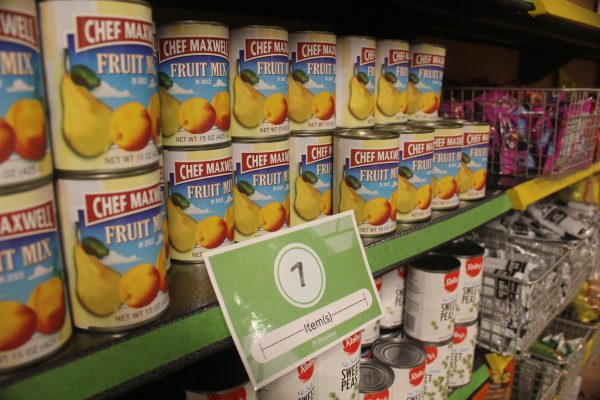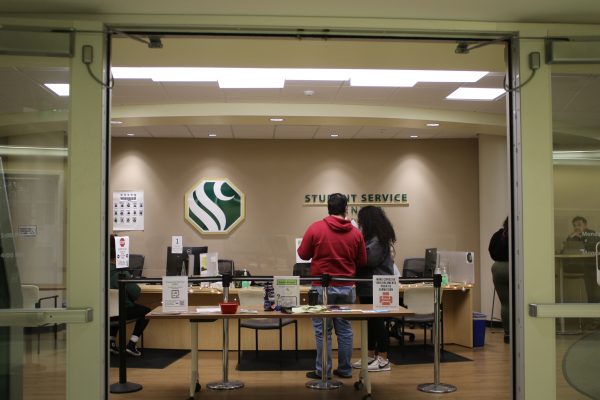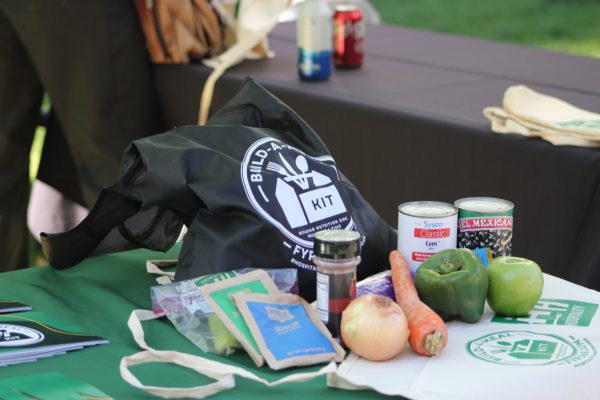Local anglers nurture Sacramento fishing tradition in campus’ backyard; most students take no notice
October 31, 2012
On an early morning in 1987, Sacramento State professor emeritus Nicholas Burnett parked his car in front of the American River levee, near the newly built Mendocino Hall. Out of curiosity, he climbed the levee and crossed paths with a man walking up the opposite side, carrying a huge salmon he had caught out of the river behind Sacramento State.
“I thought ‘Holy crap, I’m in Alaska,’” Burnett said.
As a kid growing up on the East Coast, Burnett had only seen huge fish on television shows like “Wild Kingdom.”
Now, 25 years later, Burnett is an avid angler and the American River is one of his favorite places to fish.
Sacramento is one of the only cities in the country with a spawning ground running right through the center.
“Having this resource in our backyard is remarkable,” Burnett said.
Despite people like Burnett, most of the Sac State community doesn’t fish the American River.
An informal State Hornet poll found less than 5 percent of students have ever fished the river.
But with the annual run of chinook salmon happening now, fishing condi- tions are ideal.
Thousands of hungry fish are swimming upriver on one final mission to spawn, after which they will die. They will provide nutrients to the next generation and play their smelly part in the circle of life.
Local anglers are responding by lining the banks from early morning until evening, their waders thigh-high in cold water. They’re hoping this year they’ll be lucky enough to catch the big one.
However, most Sac State students have no idea they’re there.
“In many ways, fishing is antithetical to many modern lifestyles because it requires patience. You don’t always catch fish,” Burnett said.
Yee Vang, who works at Broadway Bait Rod and Gun, said the problem is underuse.
“There’s really good fishing in the American – people just don’t take advan-tage of it. Everyone’s on the computer these days,” Vang said.
Sac State happens to be located in a prime fishing area along the American River.
Vang said he has caught his fair share of fish behind Cal Expo and at Sac State under the Guy West bridge. Burnett said Howe and Watt bridges are well-known as hot spots holding a lot of steelhead and salmon.
“There’s no secret to fishing – the secret is to go,” Vang said.
He said the American River is not as large as some rivers and is a good place to learn.
“It’s nice, it’s low and there’s a lot of big fish in there,” Vang said. “You find a hole, you find the fish,”
Vang has had incredible success just a few miles downstream from campus.
“I caught my biggest fish ever right behind Cal Expo. It was a 43-pound striper,” Vang said.
For those who don’t know, that’s a huge fish.
For anglers like Burnett and Vang, fishing is more than a sport. To them, it is multidimensional and incredibly personal. When they fish, they are enjoying nature while having fun with friends and gaining the means of eating well inexpensively.
Burnett said a fishing guide once explained it; “The goal of fishing is catching fish, but it’s not always the point.”
Senior criminal justice major Julius Bautista is one of the few Sac State students who has experienced this philosophy firsthand. He said when fishing, he enjoys the wildlife.
“Fishing is good at the American River,” Bautista said. “There (are) a lot of animals out there. I’ve seen plenty of deer, rac- coons and turkeys…I’ve actually seen a foxtoo.”
For Burnett, experiencing nature and fishing are equal priorities. For example, Burnett said he favors fly fishing, a skill he said is learned over a lifetime. Burnett also said fly fishing is an art combining the physical skills required for the long, graceful, arcing casts with a deep appreciation of the outdoors and its natural beauty.
“It’s all about getting out there and enjoying nature. It’s as much about seeing wildlife as it is catching fish,” Burnett said.
Marquez Parnell, junior business administration major, said he likes the way fishing challenges him. He recounted the story of recently landing a particularly strong fish.
“It felt good, but I was exhausted from reeling in, because when they’re bigger, and they’re fighting against the current, it’s harder to reel them in. You actually have to fight for it. It’s pretty fun; it’s a good sense of accomplishment,” Parnell said.
As well as providing fun and showcasing nature, fishing provides a form of nourishment.
Eating fish from the American River can be both healthy and frugal.
Vang, like many anglers, eats fish he catches. The meat from salmon is healthy. It is high in protein, omega-3 fatty acids and vitamin D.
“(Salmon) live in the river. There’s no steroids and they’re a lot better eating than store-bought fish.” Vang said.
At one local supermarket, fresh wild salmon cost $9 per pound, meaning an average 20-pound salmon yielding 10 pounds of edible meat would cost $90 in the supermarket, or enough to pay for a fishing pole, license and bait.
Spending money on gear is another reason a cash-strapped college student may avoid fishing. However, it doesn’t have to be expensive.
Vang said just $30 will buy a good pole and reel, and encouraged students to seek gear advice at local fishing shops.
Robert Linggi can be reached at [email protected]








































































































































